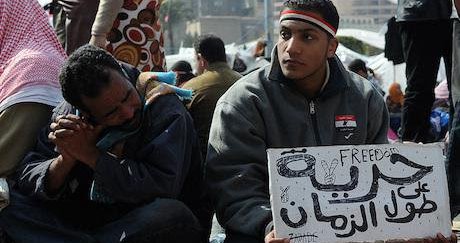
“In general, do you think that things in your country are going in the right or wrong direction?”
This question was posed by the Arab Barometer in 2018 to 26,739 individuals from 12 Arab countries. The answers were supposed to give us a panoramic view of the region, but instead they showed something else.
While the majority (61%) of respondents from Algeria, Egypt, Jordan, Lebanon, Morocco, Tunisia, Iraq, Kuwait, Libya, Palestine, Sudan and Yemen, said they thought their country was somewhere “in between”, the rest were divided over whether it had gone in the right or wrong direction. This division not only reflects the degree of polarisation in each country, but also whether respondents were among the winners or losers of their country’s changes.
The main point worth reflecting on is why the majority thought that their country was in a state of “in between” i.e. neither going in the right or wrong direction. One possible explanation is that their country has remained motionless. Another is that the contradictory forces that animated the turmoil just promoted the incorrect impression that the country was motionless.
In 2019, the UNDP conducted a survey covering 6,722 citizens of 12 Arab countries – ten of which were in common with the Arab Barometer survey. This time they were asked about discrimination, socio-economic circumstances and governance.
When it came to government responsiveness, 38% believed it had not changed in the past decade, while 30% believed it had worsened, and 22% said it had improved. What is interesting is that the richer segments of the sample were more likely to assign improvement, while lower-income respondents were more likely to feel that responsiveness had worsened, underscoring the need to take inequality as an important factor when examining citizens’ perception of change in the region.
Alarming numbers
Socio-economic conditions remain as challenging, if not more so, given the impact of the COVID-19 crisis. A UN report published in July last year estimated that up to 14.3 million people in Arab states fell into poverty in 2020 due to the crisis. This would bring the estimated total number of people living in poverty in the region to 115 million, or a quarter of the population.
This report by the United Nations Development Programme shows that youth unemployment in the region continues to be the highest in the world, standing at close to 30% in Jordan, Tunisia and Egypt, and exceeding 50% in conflict-affected countries such as Syria and Yemen.
Meanwhile, women continue to suffer a compounded effect across all levels while being under-represented in political office. Despite the increase in seats held by women in Arab national parliaments from 4% in 2000 to 18% in 2020, this share is still the lowest in the world.
This post was originally published on Radio Free.